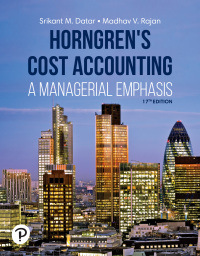Question
Ohio Corp. reported a deferred tax liability of $6,000,000 for the year ended December 31, 2020, when the tax rate was 40%. The deferred tax
Ohio Corp. reported a deferred tax liability of $6,000,000 for the year ended December
31, 2020, when the tax rate was 40%. The deferred tax liability was related to a
temporary difference of $15,000,000 caused by an installment sale in 2020. The
temporary difference is expected to reverse in years 2021 through 2023 as $5,000,000 of
installment income is expected to be recognized as taxable income in each of those years.
There are no other temporary differences. A new tax law was passed in 2021 with the tax
rate remaining 40% through December 31, 2021, then increase to 45% for tax years
beginning after December 31, 2021. Taxable income for the year 2021 is $30,000,000.
Income tax expense reported by Ohio on its year end December 31, 2021 income
statement is:
A)
$12,000,000
B)
$10,500,000
C)
$10,000,000
D)
$11,250,000
_____ 19.Maine Company reported a pretax operating loss of $150,000 for financial reporting and tax purposes in 2021. The enacted tax rate is 40% for 2021 and subsequent years. In 2019, Maine reported taxable income of $42,000 and paid $14,700 in income taxes; and in 2020 Maine reported taxable income of $40,000 and paid $16,000 in taxes. Assume Maine Company manufactures and sells automotive parts. In addition, Maine expects to generate positive operating profits and taxable income in the future. The after tax net loss
reported by Maine on its year end December 31, 2021 income statement is:
A)
$119,300
B)
$150,000
C)
$90,000
D)
$92,100
_____ 20.
At December 31, 2021, Vermont Industries reported three temporary differences between accounting and taxable income. Vermont had $25,000 of future deductible amounts resulting from accrued warranty liabilities. Vermont offers customers a one year warranty on its products. Vermont had $55,000 in future taxable amounts associated with depreciation on property and equipment, and $15,000 in future taxable amounts associated with prepaid expenses that expire in 2022. No temporary differences existed at December 31, 2020. The income tax rate is 40%. Vermont would report the following amount(s) related to deferred taxes on its year end December 31, 2021 balance sheet:
A)
$18,000 net noncurrent deferred tax liability.
B)
$4,000 current deferred tax asset and $22,000 noncurrent deferred tax liability.
C)
$10,000 noncurrent deferred tax asset and $28,000 noncurrent deferred tax
liability.
D)
$4,000
noncurrent deferred tax asset and $22,000 noncurrent deferred tax
liability
Step by Step Solution
There are 3 Steps involved in it
Step: 1

Get Instant Access to Expert-Tailored Solutions
See step-by-step solutions with expert insights and AI powered tools for academic success
Step: 2

Step: 3

Ace Your Homework with AI
Get the answers you need in no time with our AI-driven, step-by-step assistance
Get Started


